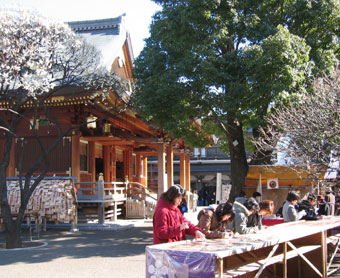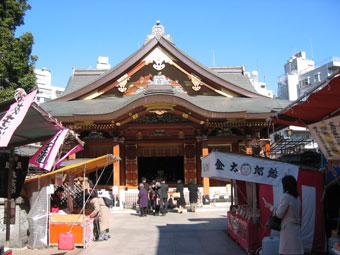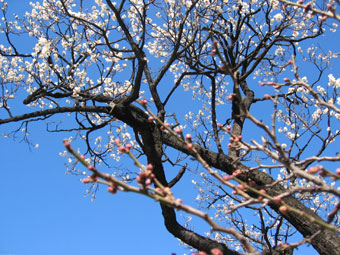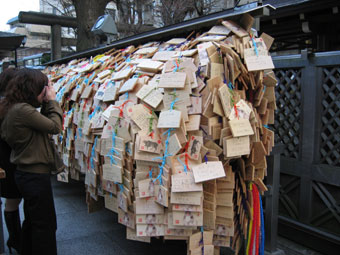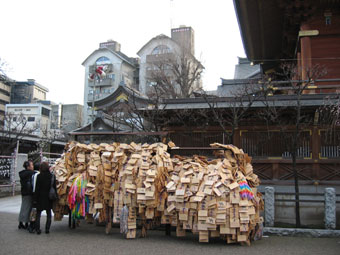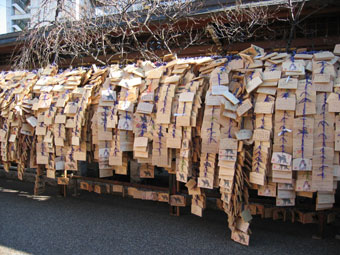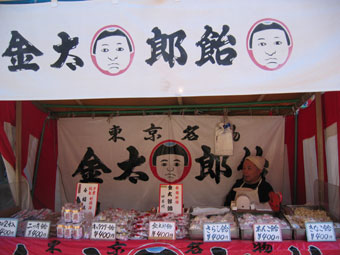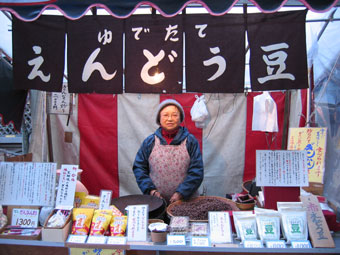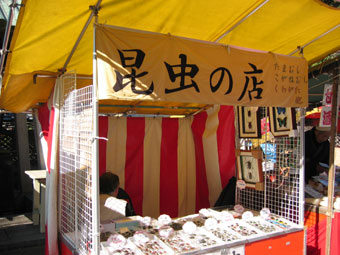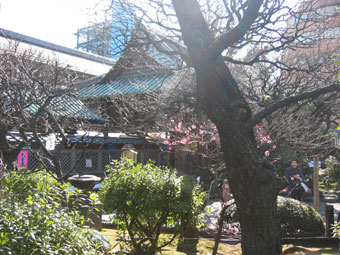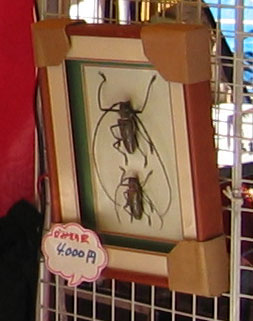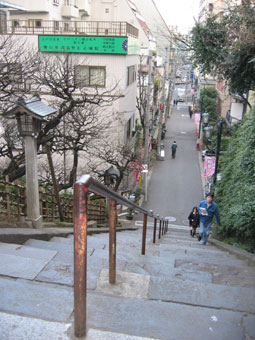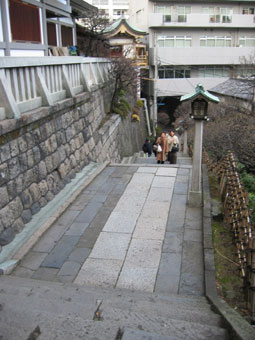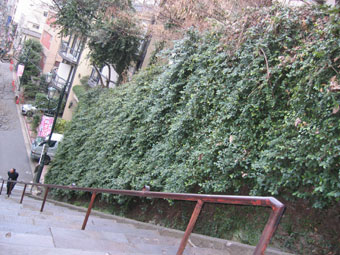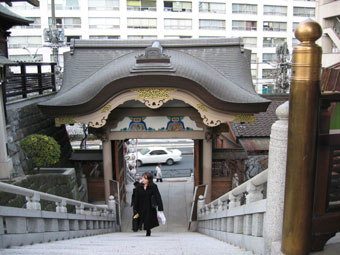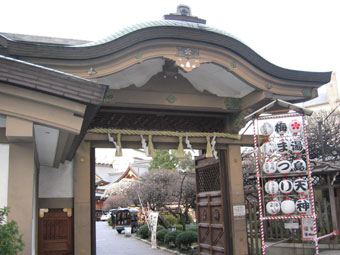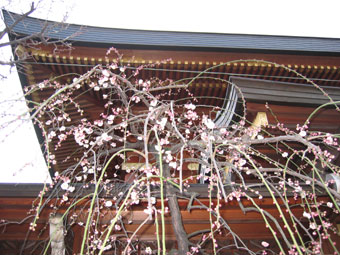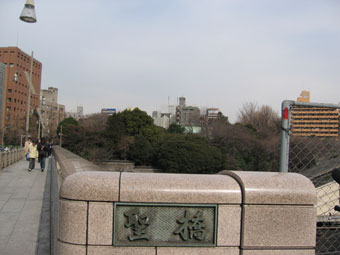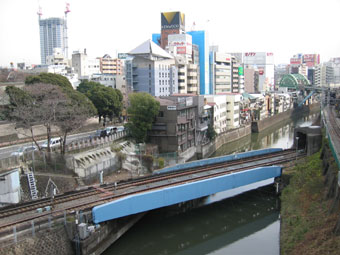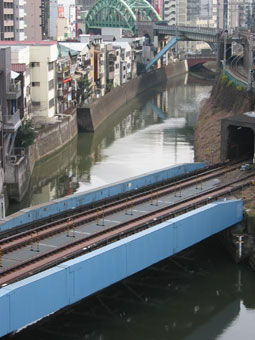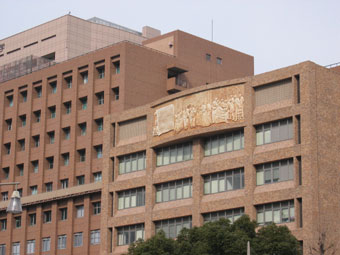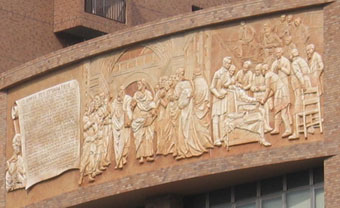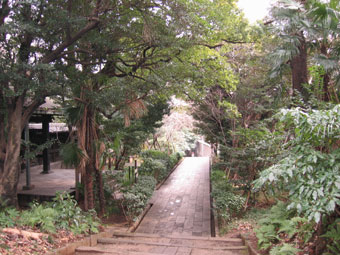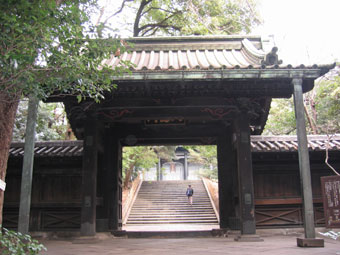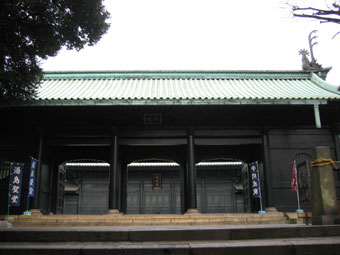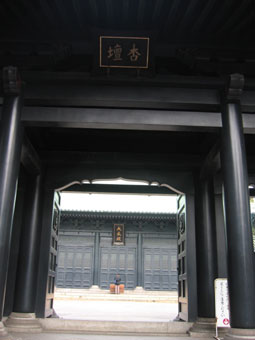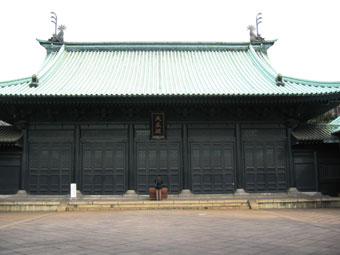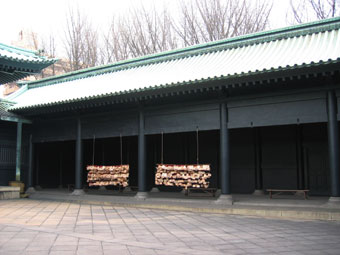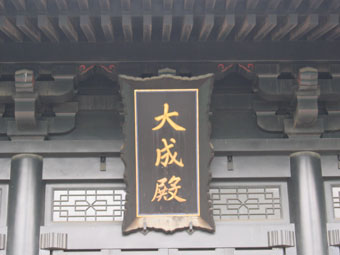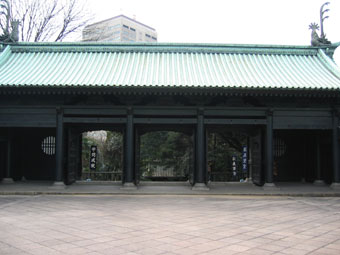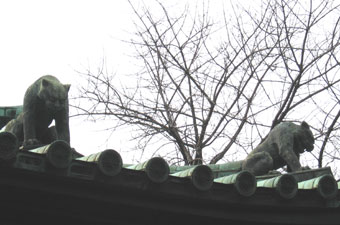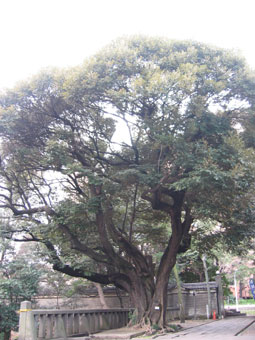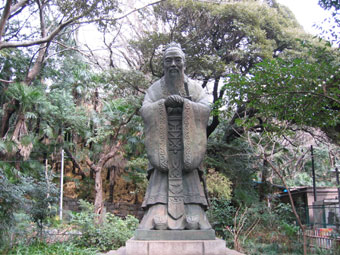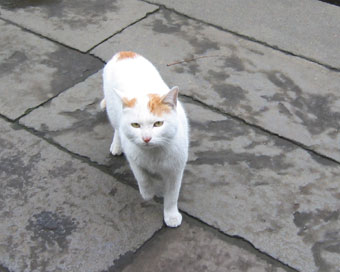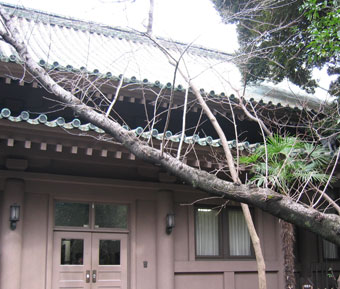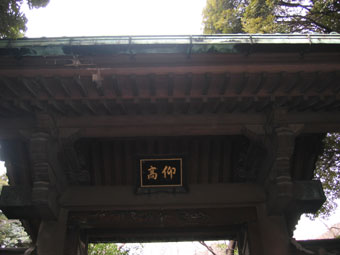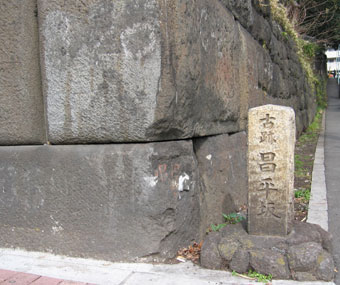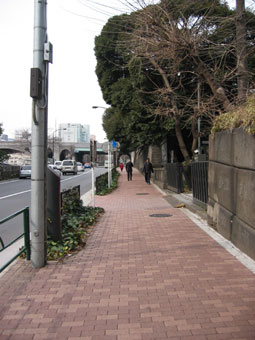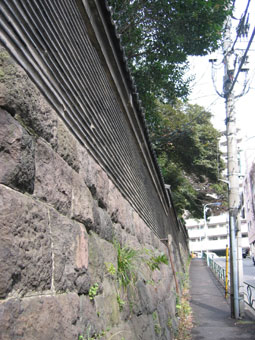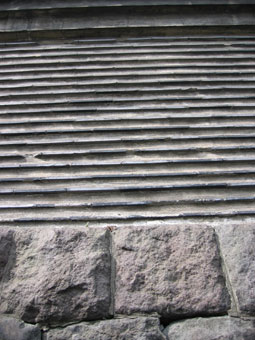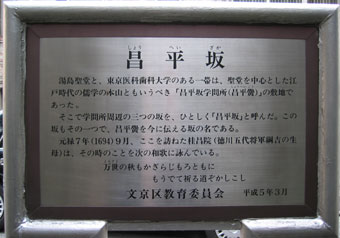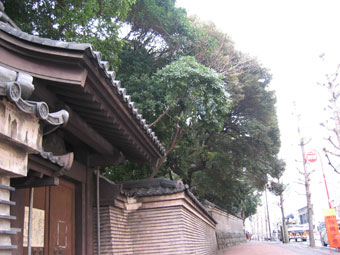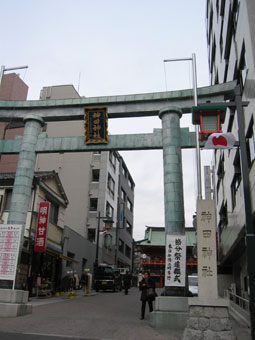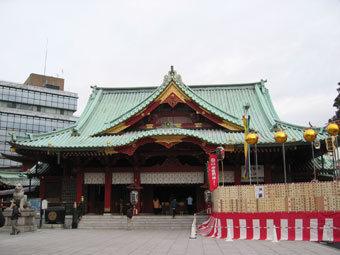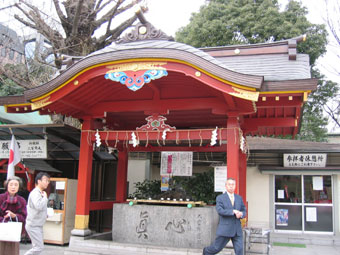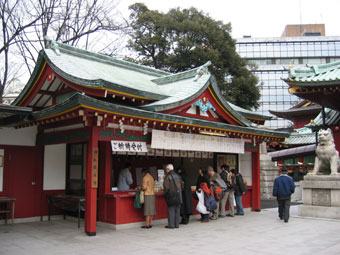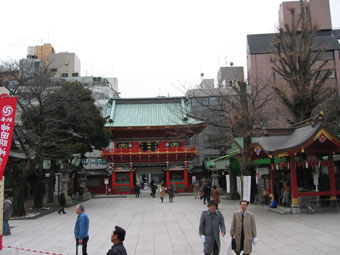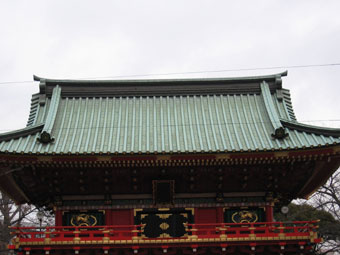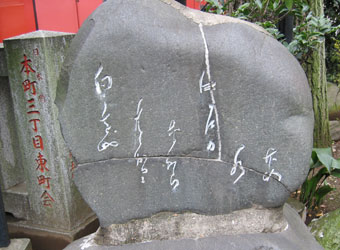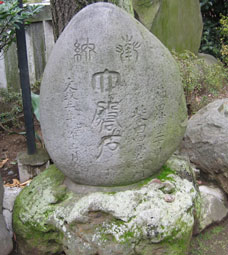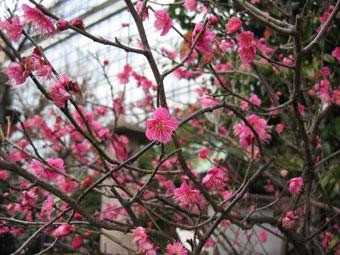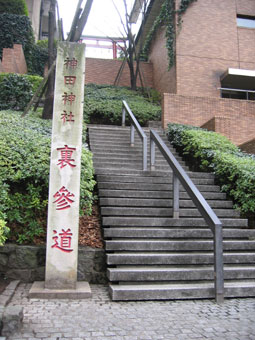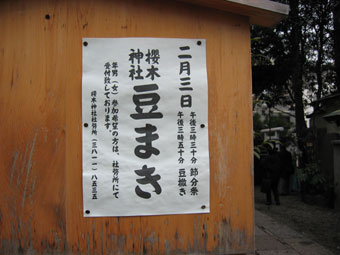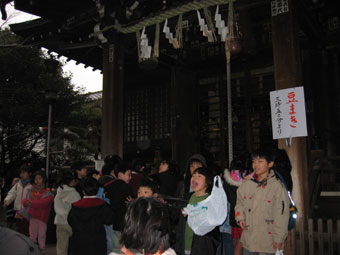|
節分の候 湯島聖地探訪 Visiting
Sacred Places in Yushima Yushima Tenjin, Yushima Seidou, Kanda Myoujin
|
湯島天神は入学試験の時期になると合格祈願の人々で賑わう。丁度ほころび始めた梅が人を呼び、一月・二月は「梅祭り」の時期でもある。まだほんの一分咲きの境内を一回りしてみた。/ Yushima Shrine in Bunkyo, Tokyo, is a sacred place for applicants to schools and universities. People pay visit to the shrine to pray for their success in entrance examinations. Yushima Tenjin is also famous for its ume (Japanese plum trees). They celebrate the ume-festival in January and February. When I visited the shrine, I found the plum trees were still in buds. |
|
本殿脇の特設台に向かって「合格祈願」の絵馬を書く人々/People are wiritng their prayers to pass entrance exams on a wooden plate called "ema" in front of the shrine's main building. |
|
湯島天神本殿正面。石畳の参道には露天が並んでお祭り気分。/ The front of Yushima Shrine. Small stalls are cramming along the stone-paved approach in a fetive mood. |
「湯島の白梅」は満開にほど遠い。紅梅は僅かにふくらみ始めている。/ Yushima Shrine is famous for white Japanese plum trees; red ones are still in buds. |
|
数々の願いが書き込んである絵馬。他の人の願い事を読んでいる人も多い。/ "Ema" with all kinds of wishes; people are reading wishes of others. |
湯島天神はビルの狭間にある。そこだけぽっかり脱都会空間。/ Yushima Tenjin is surrounded by concrete buildings. It's a quiet spot indifferent to the bustling contemporary megalopolis. |
|
鈴なりの絵馬。/Lots and lots of "ema," the prayer-boards are hanging. |
東京名物(?)「金太郎飴」。「合格」と溶かし込んである飴もあって、「合格祈願」のお土産に如何と。/ One of the stalls is selling "Kintaro-ame," a sort of candy in which the fabulous "peach boy" is installed. |
|
香ばしいギンナンを煎りながら、ほくほくのエンドウ豆も売っている。このあたりには銀杏の木がとても多いので、やはり名物なのだろう。/Roasted beans smell savory, and so do gingko seeds. In this area, there are many enormous gingko trees. |
この界隈で最もユニークな店はこれ。都内唯一の露天と自慢する「昆虫屋」。たまむし、コガネムシはもちろんのこと、プラスティックに閉じこめられたサソリも魔よけに売っている。/ One of the most unique stalls you can find here is "Bug's Shop." You can find even scorpios in plastic as a charm against evil . |
|
やがて春爛漫になると、湯島天神境内の梅林は花で埋まる。まだまだあと何週間先のことか。/ In the high time for ume blossoms, this garden will be filled with pink and white flowers of ume, Japanese plum tree. |
「昆虫の店」の看板娘(?)はインドネシアから来た巨大なカミキリムシ。その立派なこと。大枚\4,000なり。/ "Bug's Shop" is proud of a pair of longicorns from Indonesia. |
|
湯島天神東側、急勾配の「男坂」。/ In the east of Yushima Tenjin are steep steps, `Otoko Zaka" (Men's Slope). |
「男坂」と直角に出会う、幾層かに分割された緩やかな「女坂」。/ 'Onna Zaka' (Women's Slope) meets at right angles with 'Otoko Zaka'. It's divided in several stairs to make a mild slope. |
|
男坂の急勾配。 / "Otoko Zaka" shows the steep slope with numelous steps. |
春日通りに面した山門。/ A gate facing Kasuga Dori Avenue. |
|
「湯島天神梅まつり」の提灯が入り口を飾る。/ Lanaterns for Ume Festival. |
本殿背後のしだれ梅。満開の頃が偲ばれる。/ A weeping ume tree behind the main shrine. How beautiful it would be in full bloom! |
JR御茶ノ水駅を出たところに神田川に架かる橋がある。上手が「お茶の水橋」、下手が「聖橋」。どちらの橋も広々と人や車が行き交う。神田川の土手には四季折々の草木が茂り、水面に都会の空が映る。聖橋の袂から見た川向こう左手の建物は「東京医科歯科大学」、右手の繁みが「湯島聖堂」。大学の建物は新しく立派になったが、聖堂の深い杜の緑は変わらない。 Out of JR Ochyanomizu Station, you will find two bridges over the River Kanda: Ochyanomizu Bridge on the upstream and Hijiri Bridge on the downstream. People and cars are coming and going on these wide bridges all the time. Along the bank of the River Kanda, you can enjoy watching trees and flowers every season. In the waters is reflected the sky of the busiest city. At he foot of Hijiri Bridge, you will find the buildings of Tokyo Medical and Dental University on the left side; Yushima Seidou on the right side. The university's buildings are new; whereas, the deep green of the forest of Yushima Seidow has never changed. |
|
「聖橋」のたもと。/ At the foot of Hijiri Bridge. |
橋の上から神田川を見下ろすと、地下鉄丸ノ内線、JR中央線・総武線の行き交う。/ Looking down on the River Kanda, you'll be able to see Marunouchi Subway Line, JR Chuo-Line, and Soubu Line going. |
|
川に架かるいくつもの橋。/ Bridges over Kanda River. |
東京医科歯科大学の建物とレリーフ。/ Buildings of Tokyo Medical and Dental University with a relief of ancient scholars. |
|
聖橋を渡ったところから「湯島聖堂」へ下りていく階段がある。/ When you go across Hijiri Bridge, you will soon find steps down iinto Yushima Seidou. |
聖堂大成殿山門。/ The gate into Taiseiden. |
|
主だった建物は全て関東大震災で焼失し、大成殿は1935年に再建された。/ The original buildings were all burnt down by the Great Kanto Earthquake. The main building Taiseiden was built again in 1935. |
「杏壇」(学問所・講堂)と額の掲げてある大成殿入り口。/ The word in the frame overhead of the gate into Taiseiden can be read "Lecture Hall."
|
|
大成殿正面。若者が参拝している。/ The front of Taiseiden. A young man is praying. |
大成殿回廊。絵馬がたくさんかけてある。/ The cloister of Taiseiden. There are lots of ema (prayer boards) hanging. |
|
「大成殿」の金字が黒い建物にくっきりと浮き上がる。/ Three golden letters indicating "Lecture Hall" are brilliant in the monochrome building. |
中国風の屋根瓦と魔除けの屋根飾り「鬼ギン頭」。/ Roofs in Chinese style with decorative talismans against evils. |
|
「鬼龍子」と呼ばれる龍の子ども、魔除けだそうです。/ Animal shaped talismans against evils on the roof. |
スダジイ(ブナ科)/Castanopsis cuspidata var. sieboldii |
|
孔子銅像 /The blonz satue of Confucius.
|
聖堂の猫(右手がもの言いたげ) / A cat in Seidou with the expressive right paw! |
|
休息所 / A Lounge |
「仰高」と額のかかる山門。論語にある「仰之弥高、鑽之弥堅」(これを仰げばいよいよ高く、これを鑽ればいよいよ堅し)から。/ The word in the frame reads "Kou-kou": Look up and get higher quoted from Analects of Confucius. |
|
「古跡 昌平坂」の石碑。/ A stone monument indicating Shouhei Zaka Slope. |
湯島聖堂前から聖橋方向を望む。/ A view from Yushima Seidou toward Hijiri Bridge. |
|
昌平坂に面した湯島聖堂外壁。/ The stone wall of Yushima Seidou facing Shouhei Zaka Slope. |
石垣と石塀の美しいコンビネーション。/ The impressive stone wall. |
|
「昌平坂」の由来を説くプレート。/ A plate explaining the history of Shouhei Zaka Slope. |
湯島聖堂北東門。/ The north-east gate of Yushima Seidou. |
|
|
神田明神参道入り口。/ The entrance into Kanda Myoujin Shrine. |
本殿脇の豆まき用舞台。/ A special stage for throwing beans are settled with golden balls. |
|
朱塗りの手水舎。/ The red roofed water-running basin for visitors to purify themselves before prayer. |
神札授与所。これも真っ赤。/ Selling sacred goods here. |
|
「随神門」 / Zuishin Mon, the main gate. |
「随神門」クローズアップ。/ Zuishin Mon Gate closely watched. |
|
角田竹冷の句碑「白うおやはばかりながら江戸の水」/ A stone monument engraved with Tsunoda Chikurei's haiku (in Meiji Era). |
力石。厄除け、あるいは力比べのための?/ A heavy stone for spelling evils or for entertainment to test the strength of men in old days. |
|
ようやくお目にかかれた満開の紅梅。/ Red blossoms of ume. |
裏参道は何層にも曲がる急階段。 / Steep steps to the back yard of Shrine. |
|
こちらは本郷三丁目桜木神社の「豆まき」のお知らせ。/ A notice of Bean-throwing at Sakuragi Shrine in Hongo. |
桜木神社の豆まきに集まった近所の子どもたち。/ Childern waiting for the bean-throwing at Sakuragi Shrine in Hongo. |
